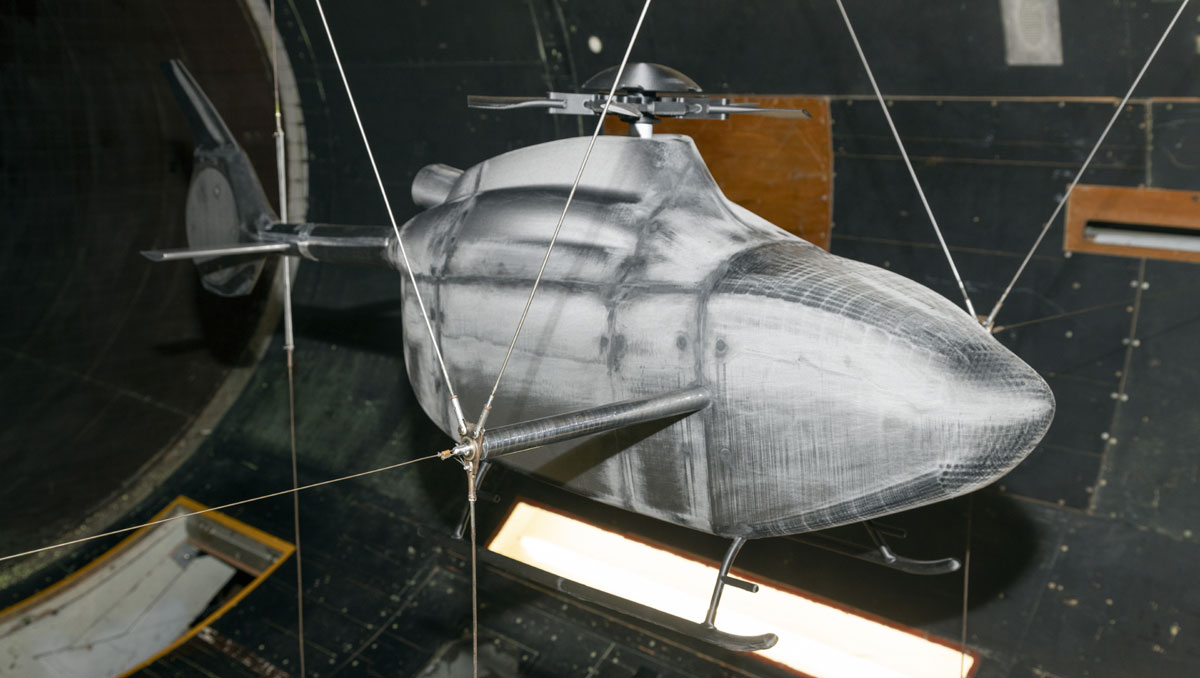The testing forms part of the Rotary Wing Uncrewed Air System (RWUAS) Technology Demonstration Programme (TDP), known as Proteus, delivery and is the first uncrewed platform model to be tested on site – providing critical aerodynamic data to assist the design team in producing an accurate flight profile of the model.
The Yeovil site’s wind tunnel helps replicate the actions of an aircraft in flight and enables engineers and designers in Yeovil to understand its aerodynamic behaviours. A 261 kW D.C electric motor drives a four-bladed fixed pitch fan that can produce wind speeds of up to 65m/s (145mph) at atmospheric pressure.
Air from the fan passes through two sets of corner vanes and into the settling chamber where there is a single honeycomb flow straightener. Downstream of the settling chamber, a 4:1 contraction accelerates the air flow into the working section where the static pressure is maintained near atmospheric with the aid of a “breather” downstream of the model.

The Proteus model was suspended in the centre of the working section via a system of fuselage and tail wires from the six-component balance system, which is housed above the tunnel. The data acquisition system enables force (Lift, Drag and Side) and moment (Pitch, Roll and Yaw) measurements of the test model to be recorded.
Two auxiliary blowers can be used independently or combined with the tunnel to enable exhaust and intake tests to be conducted. Several different types of flow visualisation methods are available to investigate aerodynamic phenomenon, including smoke for exhaust/duct flow and surface oil flow.
Following this testing, the Proteus design team is able to utilise data gathered in wind tunnel testing to validate computational simulations, confirm predictions influencing aerodynamic design on flight performance, and apply lessons learnt to inform key aircraft design decisions ahead of first flight in 2025.
Ed Dawtrey, a Leonardo Graduate Engineer currently on placement in the wind tunnel, explained how the wind tunnel testing validates Computational Fluid Dynamics (CFD) data: “The data from wind tunnel tests are used to complement and validate the CFD data, the results of which can be influenced to take into account the true aerodynamic phenomenon seen in the tunnel.
“This is a key stage in the process and delivers real benefit in terms of derisking the path to flight and informing aircraft design and aerodynamics. The extra validation of CFD is critical to proving the models designed are correctly.”
The tunnel will continue to play a vital role in the design, development and evaluation of concepts for crewed and uncrewed aircraft from Leonardo in Yeovil, ensuring aircraft are safer, more efficient and continually contributing to advancements in RWUAS.

